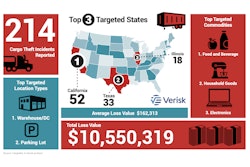The high-demand year that trucking enjoyed for most of 2018 produced strong rate hikes that translated well to owner-operator net income.
Owner-operators averaged $65,360 for the year, based on more than 15,000 leased and independent operator clients of ATBS, the nation’s largest owner-operator financial services company. That’s an 8.6 percent jump, or $5,178, from 2017, when owner-operators averaged $60,182.
 Of the segments broken out by ATBS, leased flatbedders fared the best in net income, averaging $77,720.
Of the segments broken out by ATBS, leased flatbedders fared the best in net income, averaging $77,720.“It was a record year in many areas and a great year to be an owner-operator,” says Todd Amen, ATBS CEO.
Overall average miles dropped 5.8 percent to 103,800. “This is the lowest average miles on record and is a result of independent contractors making record money and higher pay per load,” Amen says.
Some of mileage drop, which “was more pronounced later in the year,” was likely due to the hard enforcement of electronic logging devices that began April 1, he says. “But we always find when rates, revenue and income are up, drivers run less miles and are more choosy on loads.”
Of the segments broken out by ATBS, leased flatbedders fared the best in net income, averaging $77,720. Leased dry van haulers netted $66,655, and leased reefer haulers, $53,798. Independents averaged $64,219.
The hot freight market of 2018’s first three quarters was most dramatically reflected in revenue per mile. It rose 14.3 percent from 2017, or 19 cents per mile, to $1.55. However, fuel prices rose 21 percent, cutting 8 cpm off the revenue, so “revenue per mile was up a net of 11 cpm,” Amen says.
Echoing similar industry forecasts, Amen predicts a flat year for owner-ops. “We’ve added capacity, freight has slowed a bit, and as a result, spot rates are down significantly,” he says. “We see a bit of a flight to quality, where many of the independent contractors that played the spot market the last couple of years will be looking to lease on to fleets who have steady, consistent freight tied up in contracts.”








